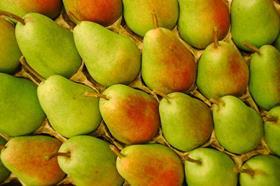
The northern Patagonian city of General Roca in Argentina played host to global pear congress Interpera 2013 last week.
The region has turned Argentina into the world’s largest exporter of pears and over three days it welcomed 240 guests not just from Argentina but France, Belgium, Spain, Italy, South Africa, South Korea, Chile and Uruguay.
It is the first time the event has been held outside Europe and Jacques Dasque, general secretary of assembly of horticultural producing regions of Europe (Areflh) was there to declare the event officially open. He said: “It is important to have a meeting of the entire chain and to imagine common projects. We face the challenges of competitiveness, the economy, the environment and agronomy, sustainable production and the challenge of stimulating consumption that is stable in some countries and falling in others.”
Tomás García Azcárate, economic adviser at the European Commission on the CMO told delegates about his concerns regarding innovation and organisation. “We are in times of cutbacks, but also in an era of synergies,” he said, pointing out that a worrying trend was the sole objective of profitability. “It seems that the closer a institution is to the grower, the less prestigious it is,” he added, pointing out that nevertheless the European Commission was investing and also had budgets for future investment.
Delegates were also treated to a panel session on mechanization, which featured Dr Carlos Magdalena from the local research station INTA Alto Valle and Terence Robinson Lee, an applied fruit-crop physiologist from Cornell University in the US. Themes such as precisions fruit-production and enhancing worker capacitation dominated these sessions.



